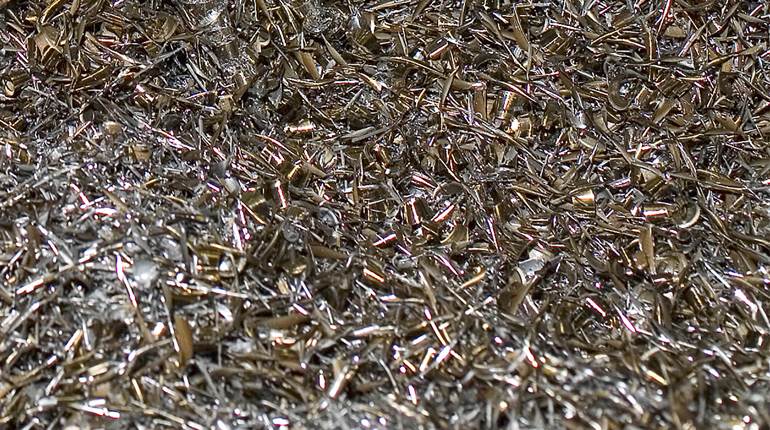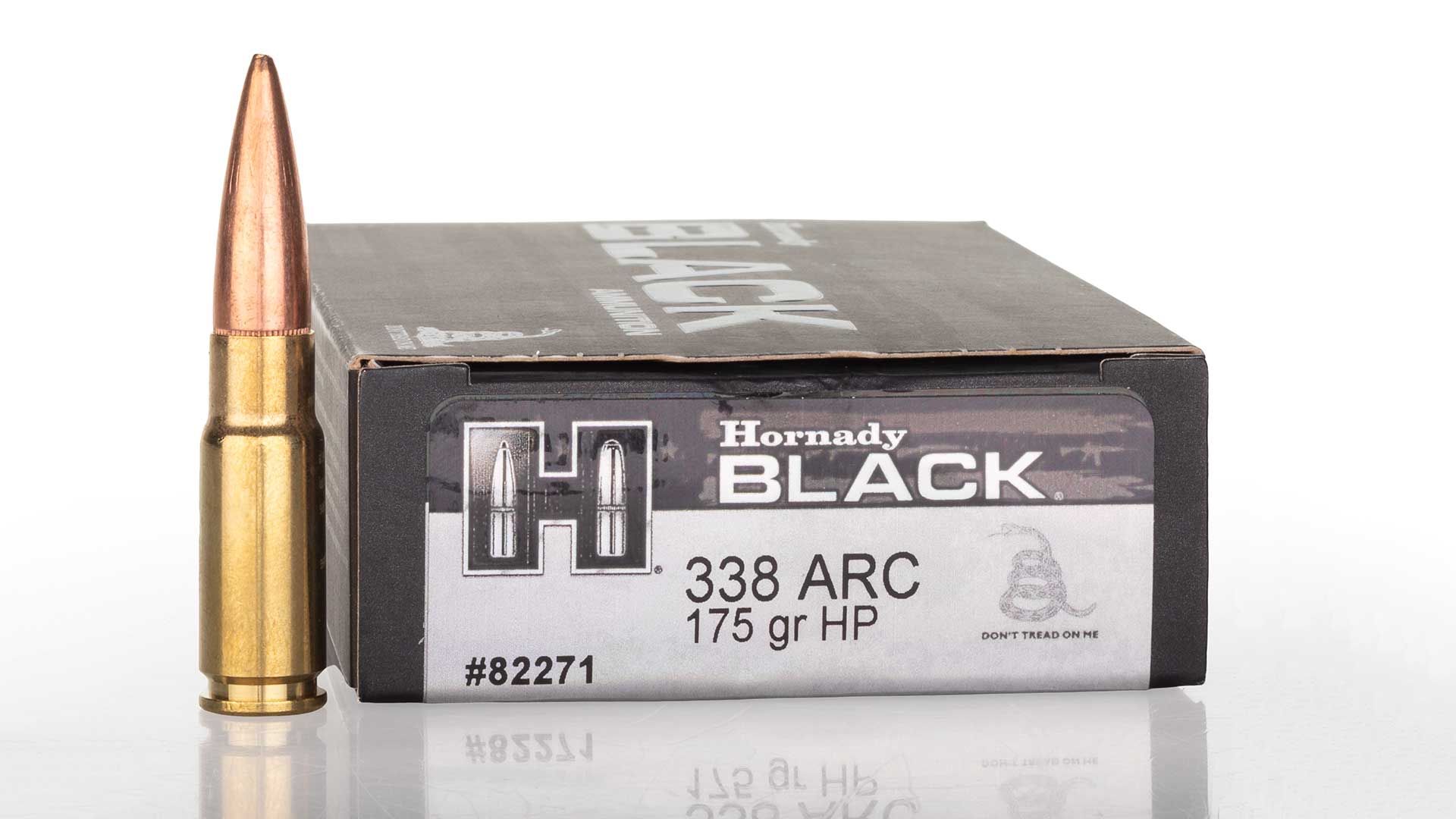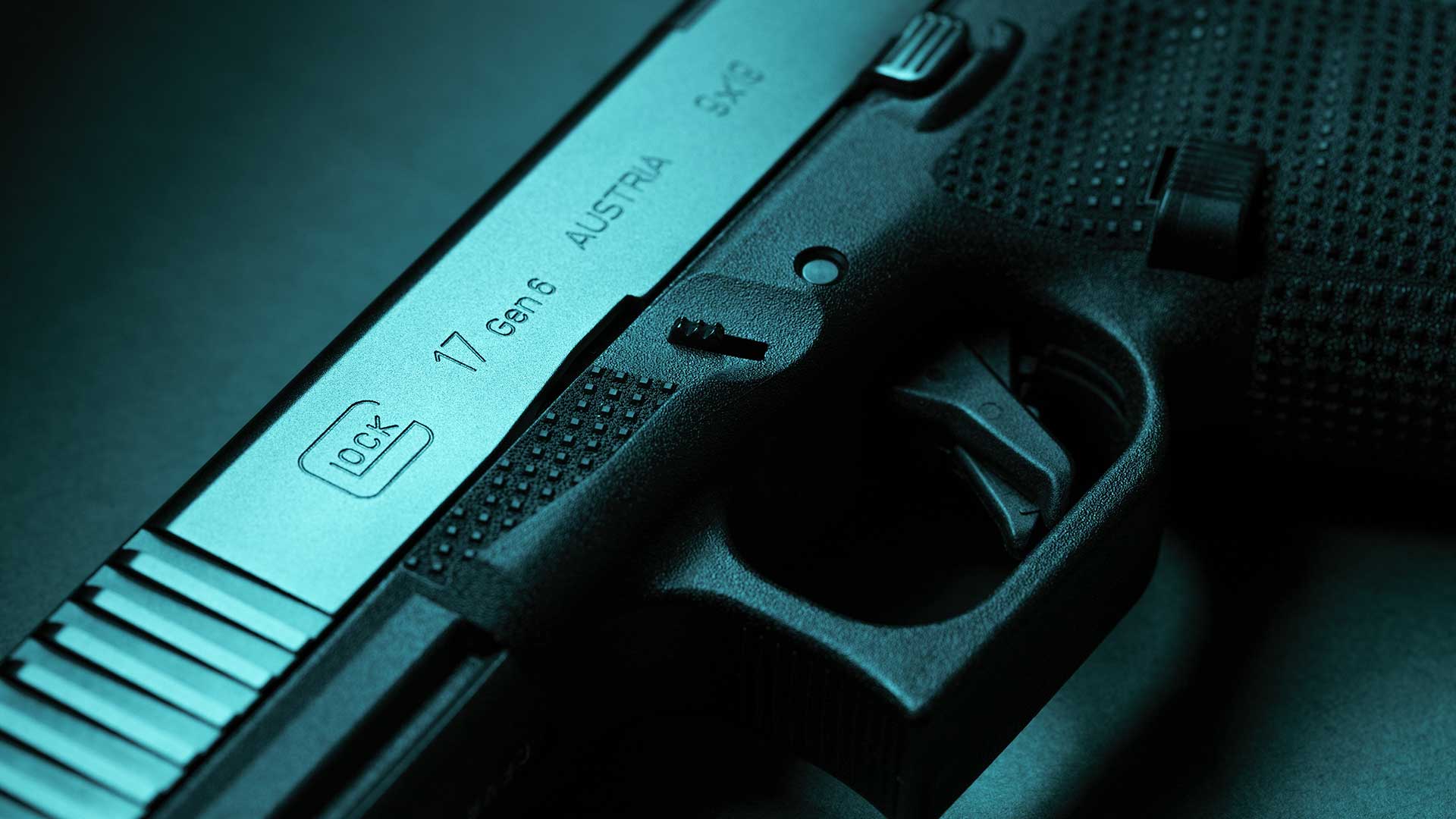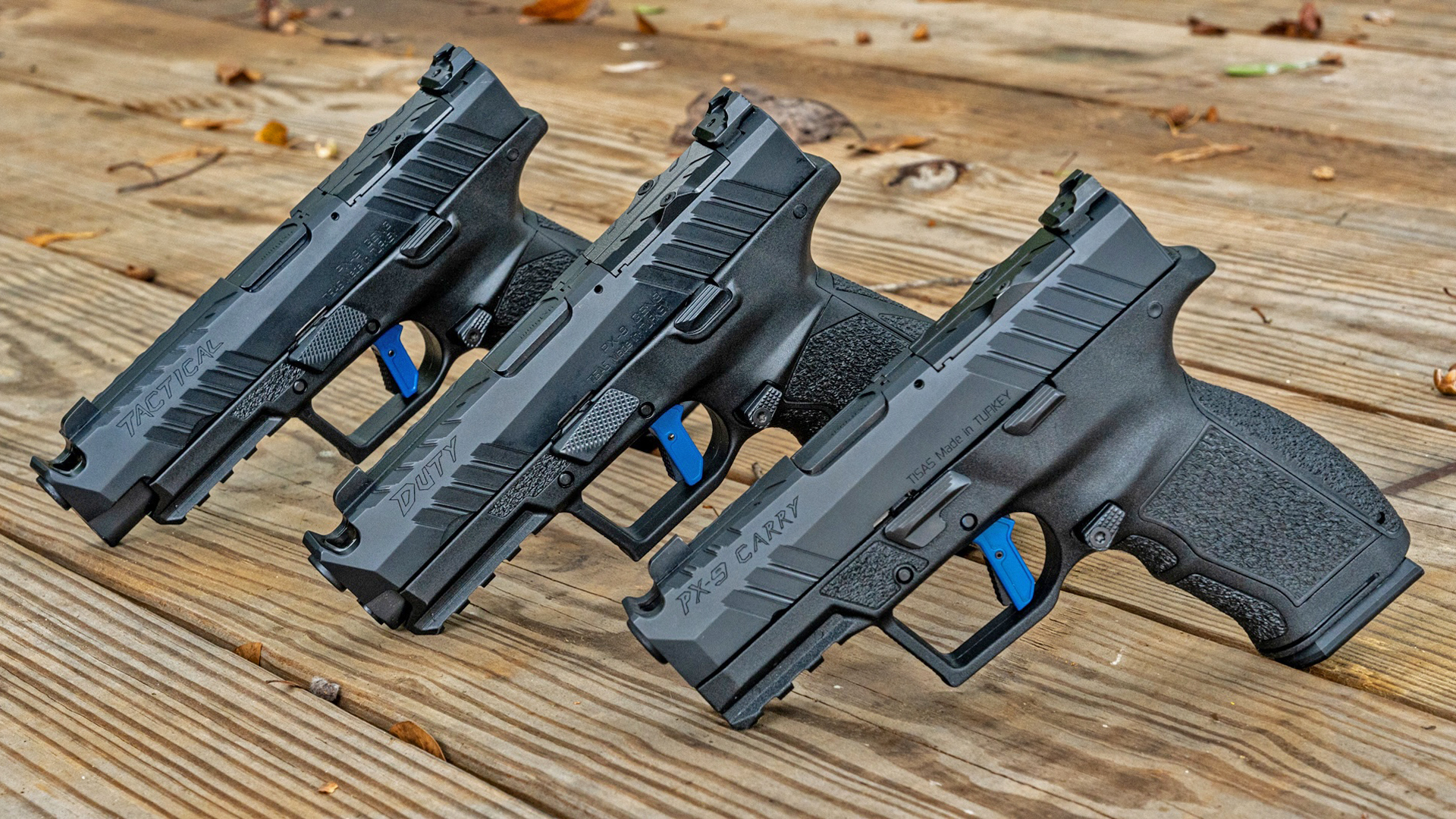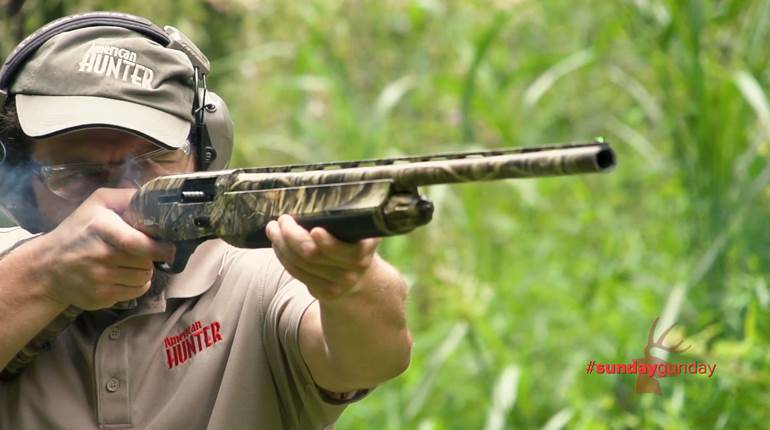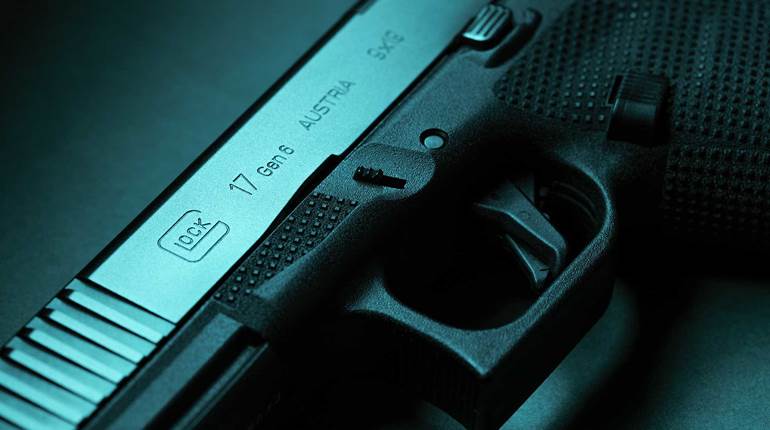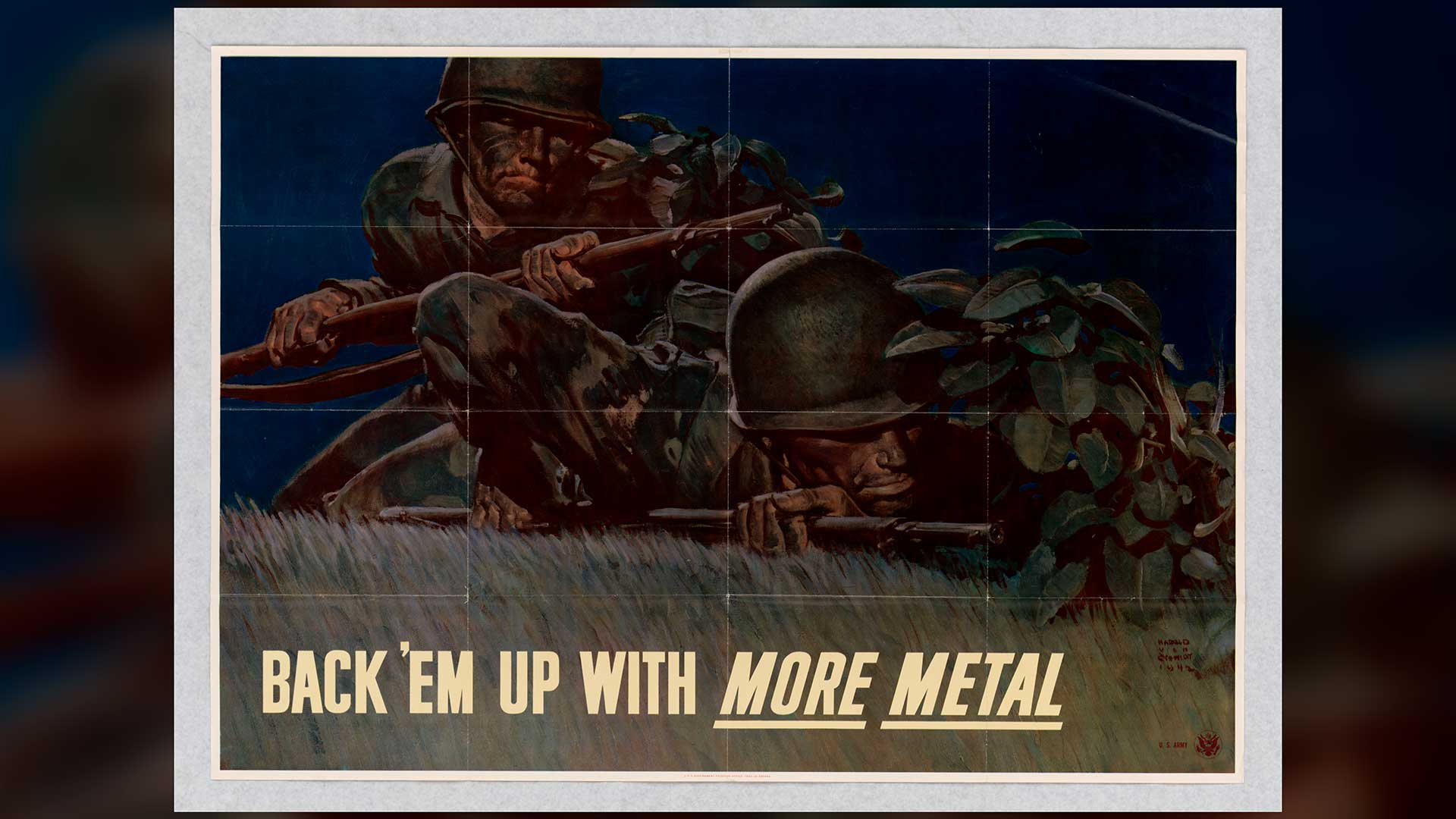
The letter read:
Dear Sir,
I am now on the front lines here. No doubt you’ve heard of our battle in which the machine guns played a major part…Yes sir, they sure put out and I feel very proud to brag to the fellows that I used to work on them. Not a jam from the start to the finish. I can’t start telling you how glad we Marines are to have them. I feel as safe behind them as I did working on them. Thanks to G.M. machine guns I am alive today.
So let all the Jap Army come along as long as I’m behind the Browning machine gun.
Sincerely yours,
Cpl George E.
The corporal was referring to the M1919A4 machine gun manufactured at General Motors Steering Gear Plant 2 located in Saginaw, Mich. With this machine gun in mind, the plant earned the sobriquet, "the Gun Plant." During World War II, the automobile manufacturer took on the role as gunmaker for the United States military, turning out M1919A4 machine guns in huge numbers, as well as large numbers of M1 carbines of first-rate quality in in its gun plant.
The amount awarded General Motors by the United States War Dept. on June 15, 1940, for the production of the Browning M1919A4 machine gun was a staggering $81,319,872.19. Of that figure, $28.8 million would be allotted for the purchase and installation of the 8,000 pieces of equipment needed to produce the guns. The remaining monies would cover the cost of producing the guns. In total, 15,000 workers were employed in making machine guns.
 A U.S. soldier takes aim with a tripod-mounted M1919A4 in Korea, 1953.
A U.S. soldier takes aim with a tripod-mounted M1919A4 in Korea, 1953.
With the U.S. entry into World War II, the M1919A4 machine gun was already prepared for mass production and had been for nearly five years. The M1919A4 Browning’s straightforward schematics and ease of operation permitted manufacturers like the Saginaw Steering Gear Division of General Motors, which had no firearm manufacturing experience, to turn out the M1919 machine guns in high numbers to arm the military during World War II. In total, a half million General Motors M1919A4 Browning machine guns were generated.
Officials from the Detroit Ordnance Plant initially approached Saginaw Steering Gear in 1937 with the proposition of them engineering and producing the Browning M1919A4 machine gun, making use of the Steering Gear methods employed in the company’s steering components production. As this would be the first machine gun ever produced by a U.S. automobile company, there were a number of barriers to overcome. The availability of rolled steel, used in many firearm parts, was limited, so many of the components had to be made using ArmaSteel castings, a combination of pig iron and scrap steel.
By January 1943, the use of ArmaSteel in place of the rolled steel saved 1,368 tons of steel, allowing that additional raw material to be used in producing other sorely needed war supplies. Using ArmaSteel to produce barrel supports for the Browning M1919A4 machine gun sped up operations by cutting the machining steps to 10 from the original 24. Another example of Saginaw's manufacturing expediency was the redesign of the grip and stock. Originally requiring the compilation of nine parts, the assembly was reduced to a stand-alone piece cast in ArmaSteel. With traditional rolled steel, the machining involved in a finished machine gun receiver removed 14 lbs. of metal. With ArmaSteel, that number was reduced to 5 lbs. These revamps had the added benefit of significantly reduced production costs.
According to firearm historian Michael Parker, "The enduring thing about the Browning machine guns, the 1917 and the 1919, is that they always work! John Browning's design philosophy was to make the parts big and robust. His own personal testing regimen was so rigid, the standards that he set for himself were so high, that the guns easily surpassed the most demanding Army tests."
Where many military forces of the day employed Hiram Maxim's toggle-lock design, Browning's machine gun used a sliding-block mechanism that was simpler and shed excess weight while giving up none of its reliability.
 Major General L.H. Campbell Jr. (above) 16th Chief of Ordnance for the U.S. Army Ordnance Corps sang the praises on the M1 carbine.
Major General L.H. Campbell Jr. (above) 16th Chief of Ordnance for the U.S. Army Ordnance Corps sang the praises on the M1 carbine.
NRA Museums Director Philip Schreier addressed the improved serviceability of the air-cooled Browning M1919, a definite upgrade over the Browning M1917 that was water-cooled. "It's the gun we see that's mounted on the front of the tanks and on the back of jeeps. This is the machine gun we see the infantry using as a squad automatic weapon throughout the Second World War, Korea and Vietnam."
This first M1919A4 machine gun was comprised of 190 small, mostly machined parts that required 77 sequential operations. The early M1919A4's heat shield, with horizontal slots, was soon replaced with circular perforations. The early models were also fitted with a rotating notched bar that was situated on the right side of the receiver. This was used to keep the bolt in the open position to prevent thermally induced firing in a hot barrel. This bolt latch was officially discontinued in 1943, but the latch could still be found on some units until the '50s. The M1919 originally fired the .30 Caliber M1906 (.30-'06 Sprg.) ball cartridge, later changed to the .30 Caliber M2 ball cartridge, contained in a woven cloth belt. This sometimes had a jamming effect, so the metal M1 link that was designed to allow each spent cartridge to fall away from the gun was later approved.
The .30-cal., air-cooled Browning 1919A4 machine gun tipped the scales near 31 lbs. and was efficient in firing 430 rounds per minute. In a head-to-head match-up of the M1919A4 machine gun versus the comparable Japanese machine gun, Col. H.M. Reedall, chief of the Cleveland Ordnance District, stated the following: "Though the Jap machine gun is deadly at short distances and can spit bullets at 30 rounds in three seconds, it is not the equal of the Browning .30 caliber machine gun at 500 yards. Besides the Browning can fire twice as fast in a minute."
 U.S. Army, 2nd Battalion, 26th Infantry, soldiers shooting the M1919 Browning in the streets of Aachen, Germany, 1944.
U.S. Army, 2nd Battalion, 26th Infantry, soldiers shooting the M1919 Browning in the streets of Aachen, Germany, 1944.
The Saginaw Steering Gear Division had the distinction of producing the first machine gun ever made in an automobile factory. That first machine gun was delivered on March 27, 1941, well ahead of the December 1941 deadline. The next deadline was March 1942. The contract expectation was for 280 guns, at $667 per gun, to be delivered by that date; but Plant 2 was able to produce 28,728 guns by that time, a staggering increase in production rate. Saginaw Steering also reduced the cost per gun and reduced the price from $667 to $141.44 per unit, around 21 percent of the original estimate. These results led Saginaw Steering Gear to be the recipient of the Army-Navy E two-star award for production efficiency and excellence (New Gun Contract to Steering Gear Plant, 1943). By the end of the war, the cost per gun was an unbelievably low price of $54.72.
Another firearm manufactured by Saginaw Steering Gear was the M1 carbine, one of the most widely produced firearms of World War II. A lightweight semi-automatic .30-cal. rifle with a theoretical effective range of 300 yards, it was designed initially to replace the M1911A1 .45-cal. pistol for many troops who weren't in the front line but needed an effective arm. The .30 Carbine cartridge was fed from a detachable box magazine with a 15-round capacity. The M1 Carbine was originally manufactured with a regular flip sight with two settings: 150 and 300 yards. Field reports proved the flip sight was unsatisfactory, so it was replaced in 1944 with sliding ramp-type, elevation- and windage-adjustable sight, with double the number of settings of the original flip sight: 100, 200, 250 and 300 yards.
 This Underwood Elliot Fisher M1 carbine in the NRA National Firearm Museum collection has the later ramped rear sight that partially obscures the serial number.
This Underwood Elliot Fisher M1 carbine in the NRA National Firearm Museum collection has the later ramped rear sight that partially obscures the serial number.
The number of M1 carbines produced during World War II exceeded 6.1 million, more than any other small arm. Of this number, Saginaw Steering Gear Plant 2, in tandem with the Grand Rapids General Motors plant, produced 517,000 M1 carbines. As far as the importance of this weapon to the war effort was summed up by Maj. Gen. L.H. Campbell, Jr., 16th Chief of Ordnance for the U.S. Army Ordnance Corps. "Reports coming in from all jungle theaters indicate that the carbine is going to be the most useful weapon due to its light weight, small overall length and the light weight ammunition."
 Ethiopian soldiers with .30-cal. carbine and M1 rifle, Ethiopian Bn., 7th Inf. Div., Korea, 1953. (Note the white tape around the carbine's magazine, indicating that the soldier has taped two magazines end-to-end to enable faster reloading.)
Ethiopian soldiers with .30-cal. carbine and M1 rifle, Ethiopian Bn., 7th Inf. Div., Korea, 1953. (Note the white tape around the carbine's magazine, indicating that the soldier has taped two magazines end-to-end to enable faster reloading.)
Due to the Saginaw Steering Gear Division’s outstanding efforts, it was awarded contracts for other military equipment, such as 1919A6 .30-cal. machine guns, 37 mm projectiles and 57 mm projectiles. In addition, Saginaw Steering gear produced bolt assemblies, barrel bushings and barrel collars for the M3 submachine gun built by the General Motors Guide Lamp Division of Saginaw Steering Gear. But the list didn’t end there. Ultimately, Saginaw Steering Gear manufactured sub-assemblies for several other military products.
The complete list includes parts for: "Amphibian trucks (GMC DUKW), Canadian military vehicles (GM of Canada), 20 mm Oerlikon anti-aircraft guns (Pontiac Motor Division), 40 mm anti-aircraft guns (Pontiac Motor Division), industrial trucks, industrial cranes, industrial tractors, military aircraft, military road building equipment, Export Reconnaissance Vehicles (Chevrolet Staghound Armored Car), Armored Cars (Chevrolet Staghound Armored Car), diesel engine parts for trucks, tanks and boats (Detroit Diesel Division), Army Tanks (Fisher Body Grand Blanc Tank Arsenal), Army Tank Destroyers (Fisher Body Grand Blanc Tank Arsenal and Buick Motor Division), Gun Turrets, Army and Navy Supply Vehicles (GMC and Chevrolet)."
In its efforts, Saginaw Steering Gear and General Motors proved that American manufacturers had what it took to produce the overwhelming amount of small arms, ordnance and supplies needed for the Allies to triumph over Nazi Germany and Imperial Japan.















